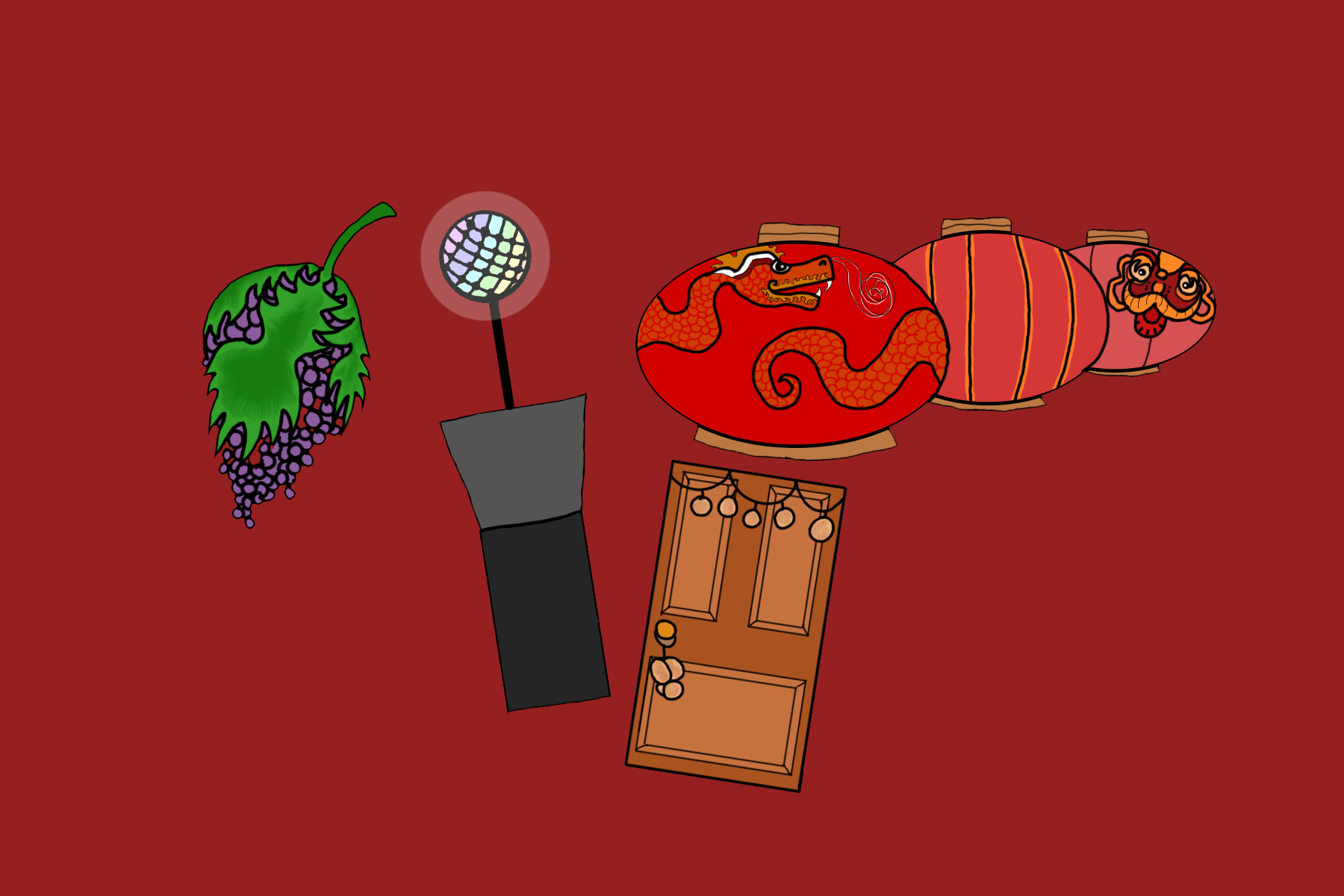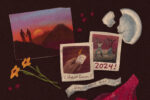It’s that time of the year again, where things are coming to an end. The year is disappearing and the next is creeping up on you. In order to welcome in the new year, people will celebrate differently around the world. Some traditions will be relatable while others will surprise you. Maybe you’ll find that it wouldn’t hurt to incorporate some of these traditions into your own lives.
United States’ Traditions
New Year’s Eve and New Year’s Day have always been festive events in the United States. Americans embrace certain traditions that have existed for extended bouts of time. Listed below are classic ones that most people indulge in.
— New Year’s Resolutions
The idea of “New Year’s resolutions” has religious origins. The Babylonians, Romans and Christians believe that it is important to prepare for the new year and make sincere promises to their gods. Because of the strong religious influence, New Year’s resolutions have become a popular tradition in the United States. Before the new year kicks in, Americans will set goals for themselves to achieve in the upcoming year. Popular ones include losing weight, quitting smoking, ascending the career ladder and getting married.
— NYC Times Square Drop
One well-known tradition in the United States is watching the famous Times Square Ball drop in New York. The first ball drop was held on Dec. 31, 1907, to promote the new headquarters of The New York Times. Ever since then, it has been a long-standing tradition for New Yorkers and visitors to see the ball drop. Starting at 11:59 pm Eastern Time, the ball will slowly slide down the flagpole and rest at the bottom at midnight. Everyone will proceed to cheer and celebrate the beginning of a new year.
Times Square getting ready for New Year’s Eve and the ball drop 🥂🎉 #NewYorkCity #NYC #TimesSquare #NewYearsEve #Balldrop #happynewyear #NYCHolidays #seeyourcity pic.twitter.com/JjYag0TMV9
— CAC Graphics (@CACGraphics) December 31, 2019
— New Year’s Kiss
This tradition is not just a cliché in romantic movies. When the clock hits midnight on New Year’s Eve, two people will pucker up and kiss. Legend says, for couples, whoever you kiss will set the tone for the rest of the year. The kiss symbolizes keeping a healthy and stable relationship. On the other hand, singles believe that not kissing someone will introduce another year of loneliness. Therefore, the kissing tradition has kept its place in mainstream society.
Japanese Traditions
In comparison to the U.S., it’s interesting to observe how the East celebrates such a special occasion. Japan is a modern country that tries to combine old cultures and traditions with new ones. Therefore, its New Year’s celebration is a mixture of traditional and contemporary influences.
— Ringing Bells
The Japanese New Year also falls on Jan. 1. During New Year’s Eve, Japanese people will participate in a bell ringing ceremony where they go to Buddhist temples and watch the monks ring the bells 107 times. One more extra ring is heard after the new year begins. They do so to get rid of the 108 human sins (bonnou) in Buddhism and to start off the new year with good luck.
— Fukubukuro
A popular New Year’s tradition in Japan is to buy lucky bags, also known as fukubukuro, with random items in it. Fuku means good luck or fortune in Japanese. Fukuro/bukuro means bag. Merchants will sell lucky bags at highly discounted prices to get rid of old merchandise. This stems from Japanese tradition, which states that one should not start the New Year with unwanted items. Rather, it’s important to have a clean slate. For consumers, it’s a fun way to test their luck and to take advantage of sales.
— Bonenkai Parties
During the Japanese New Year, people also have the day off. During this break, bonenkai parties, translated to “forget the year” parties, are held. It’s a Japanese drinking party that is usually held amongst friends or co-workers. People will drink the night away to forget bad events and woes that have occurred within the past year. In addition to that, it’s also seen as a bonding event, where individuals can become closer with one another.
Ecuadorian Traditions
Ecuador is a place in South America that’s known for their unique culture of music and dance. They also have fascinating traditions to welcome in the new year.
— Año Viejo
New Year’s also begins on Jan. 1 for Ecuadorians. Before then, on New Year’s Eve, people will create effigies of people that they dislike or find annoying. They will attach handwritten notes to the dummies that represent the person that they have in mind. This dummy is then tossed into a big fire pit. During this process, the gathering crowd will clap and clamor as dummies are burned. It’s a tradition that is truly cathartic and exciting. It symbolizes burning up anger, resentment, regrets and failure of the past.
— Viudas de Año Nuevo
In response to the unfortunate passing of the dummies, men will dress up in drag on New Year’s to cause traffic congestion. The men are dressed as widows or viudas to honor their deceased husband, the “Ano Viejo,” aka the dummy that has just been burned. They will block off certain streets and areas in order to ask for funds to support themselves as widows. Viudas de Año Nuevo is simply a comical and ingenious response to the first tradition.
Jewish Traditions
Rosh Hashanah is the Jewish New Year. Unlike the others, this New Year does not follow the Gregorian calendar. It actually occurs during the early autumn of the Northern Hemisphere. It’s a two day affair that begins on the first of Tishrei, the seventh month in the ecclesiastical year. In Judaism, Rosh Hashanah is a time to celebrate G-d as the superior being that rules over time and space. During this time, people ask him for forgiveness and to be blessed with good fortune and joy in the upcoming year.
I think I've said this before, but I usually do my new year thinking around Rosh Hashanah, not because I'm super observant, but because autumn is such a better time for a new year than January. That said, 2019 was a lot and I'm hoping 2020 is just a tad gentler.
— Hannah Chaskin (@hmchaskin) December 31, 2019
— Shofar in the Synagogue
One important tradition during the holiday is visiting the synagogue to pray and to listen to the shofar. The shofar is the horn of a ram. When blown, it sounds like a trumpet that plays a variety of notes, including a tekiah, tekiah gedolah and teruah. The blowing of the shofar usually occurs after the Torah is read and before the Musaf prayer is read. People will listen for the different types of notes because it calls for repentance and reflection.
— Tashlich
This tradition occurs during the first afternoon of the holiday. Jewish people will go to a body of water, whether it’s a river, lake, pond, etc. to “cast away their sins.” They empty their pockets by throwing breadcrumbs into the water to get rid of their unholy deeds and misgivings that have occurred within the past year. They do so because the custom symbolizes the verse that calls for one to “cast their sins into the depths of the sea.”
— Apples and Honey
Ever since the 7th century, it has become a common tradition to consume apples and honey during the Rosh Hashanah after reciting a special prayer. Apples were seen as fruits with magical healing properties to the ancient Jews and it symbolized their relationship to God, whereas honey symbolizes a sweet new year. This combination must be consumed to wish sweetness, fruitful abundance and hope upon a new year
As we slide into 2020, it is bound to be a new year that brings in changes — that may be good or bad. Whether you dread it or choose to welcome it, it doesn’t hurt to learn about traditions that people of different backgrounds hold dear to their hearts. It is also fun to understand how momentous the new year is, not just for us, but also for our global pals.
















